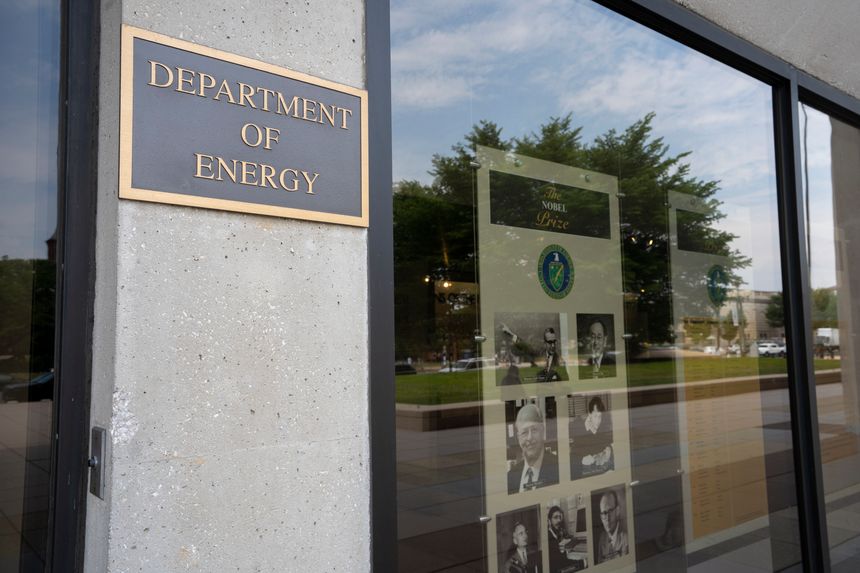Noting the Trump Administration’s commitment to revitalizing domestic manufacturing and driving artificial intelligence innovation, the Department of Energy (“DOE”) is pushing the Federal Energy Regulatory Commission (“FERC”) to do more to ensure large energy users such as data centers can expeditiously connect to the grid. The move comes with DOE’s acknowledgement that, historically, FERC has exerted jurisdiction over the interconnection of generation facilities but not the interconnection of large loads, which is currently handled by states.
Late last week, the Secretary of Energy directed FERC to initiate rulemaking procedures and provided an Advance Notice of Proposed Rulemaking (“ANOPR”) outlining a set of principles to guide FERC’s rulemaking which would apply to new loads or hybrid facilities (with co-located generation and load) greater than 20 MW that are directly interconnecting to transmission facilities. The Secretary asked FERC to take final action on the proposed reforms by April 30, 2026. FERC wasted no time, issuing its Notice Inviting Comments on the ANOPR just days later (Docket No. RM26-4-000). Initial comments on the ANOPR are due November 14, 2025. FERC will accept reply comments by November 28, 2025.
The guiding principles proposed by the ANOPR are aimed toward easing and expediting the connection of large energy loads to the grid and include:
Study Requirements:
- Study load and hybrid facilities together with generating facilities and require standardized study deposits, readiness requirements, and withdrawal penalties.
- Study hybrid facilities based on the amount of injection and/or withdrawal rights requested and require hybrid facilities install the system protection facilities necessary to prevent unauthorized injections or withdrawals that exceed the respective rights.
Process and Priorities:
- Expedite interconnection load studies for large loads that agree to be curtailable and hybrid facilities that agree to be curtailable and dispatchable.
- Existing generating facilities that seek to enter a partial suspension to serve a new load at the same location must go through a system support resource/reliability must run type study.
Responsibilities and Rights:
- Load and hybrid facilities bear full responsibility for the network upgrades that they are assigned through the interconnection studies.
- Afford the interconnection customer equivalent options to build as currently provided to generator interconnection customers, in instances where the interconnection customer is not the transmission owner.
- Utilities serving large loads, including those at hybrid facilities, bear responsibility for transmission service based on their withdrawal rights.
- Utilities serving large loads, including those at hybrid facilities, bear responsibility for ancillary services based on peak demand, without consideration of any co-located generation.
- Utilities serving large loads must meet all applicable NERC reliability standards and OATT provisions.
The ANOPR expressly seeks comment on several of these principles, including whether the 20 MW load applicability is the correct threshold and how to develop appropriate transition plans for the treatment of large load interconnections that are already in the study queue.
What’s Next?
With the recent addition of two new members, FERC now has a full complement of Commissioners and a new chair. As this newly constituted Commission begins its work, responding to DOE’s proposal will be an early and high-profile action. While FERC has already explored the issue of data center and other large load interconnection—including through a large loads technical conference late last year and its annual reliability technical conference held just last week—DOE’s request for final action by April 2026 adds urgency to FERC’s consideration of next steps. FERC’s quick issuance of its Notice Inviting Comments on DOE’s ANOPR is no surprise.
DOE anticipates that parties are likely to challenge FERC’s jurisdiction to act on these interconnection issues, and the ANOPR preemptively lays out legal justification for FERC’s authority to regulate in this area. This includes arguments that the proposal does not infringe on States’ authority because FERC is not exerting jurisdiction over any retail sales to the large load customer or taking action regarding the siting, expansion, or modification of generation facilities.
The ANOPR was issued under Section 403 of the Department of Energy Organization Act, which allows DOE to propose rulemakings to FERC but does not require that FERC accept them as proposed. In this case, FERC quickly published the ANOPR in the Federal Register and set a short two-week timeline for initial comments to inform the agency’s approach to DOE’s proposal.
Any proposed rulemaking in this area will have significant implications for utilities, large energy users, and existing interconnection practices at the state level. Expect a crowded docket at FERC, with comments reflecting widely varying views on whether a uniform and prescriptive rule is preferred over region-specific mechanisms as well as whether FERC has legal authority to regulate these types of interconnections.


/Passle/6878183c1547331efeed13be/SearchServiceImages/2025-12-12-19-53-02-092-693c729e2a1eb292d8c0bfb4.jpg)
/Passle/6878183c1547331efeed13be/SearchServiceImages/2025-11-14-16-05-51-914-6917535fde724085121769d1.jpg)
/Passle/6878183c1547331efeed13be/SearchServiceImages/2025-11-10-15-01-24-272-6911fe442100bb49e79655f1.jpg)